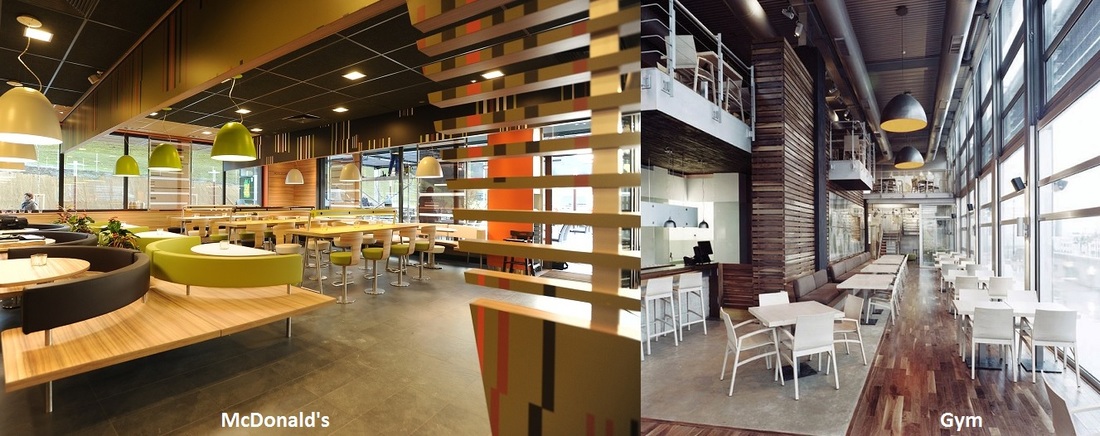Fortunes's Phil Wahba recently delivered an articulate and lucid essay on the closing of hundreds of McDonald's stores in an effort to mitigate declining revenue and profits. So what's a iconic fast food brand to do? Re-brand of course, in an orchestrated multi channel effort uniting social media, PR, menu changes and interior design (our subject of discourse). Actually, their interior re-branding effort began back in 2008 when franchisees decided to create stylish interiors for the brand which effort was to move them from stogy to stylish, and this, in my opinion, is the classic interior design fail.
Designers are a breed of creative elitists intent on spawning their vision at all costs, including and at the detriment of their client's best interests, investment and brand identity.Why? Promotion of their ego and procreation of their superior design vision, it's all about them and their portfolios. Rather than branding you're gym they're more concerned with having their concepts built. They're intent on impressing their industry peers, one-upping and upstaging their competition, by delivering their own interpretation of the current popular design trend. This in my opinion is in conflict with a "professional design code of conduct" and broadcasts design malfeasance.
When interior designers produce designs that reflect a trend or their personal tastes rather than power branding their client's business model they...
- Blur their clients brands
- Squander their clients investment
- Subvert their clients marketing opportunities
- Undermine their client's ability to dominate a marketplace
But who else? Some might argue that interior design is a lofty art form, subjective and sacred, practiced by the overlord's of design, the keepers of the creative realm, no, a designer is a consultant, no more, no less. Resist elevating a design firm to the role of sole arbiter of your gym's interior aesthetics. Your gym design should reflect YOUR vision, not the designer's. Designers are facilitators of the built environment and their personal vision, tastes and style should bear no affect on their clients spaces. More than that, designers should rather advise their clients to reject design trends and endeavor to develop some organic concept that is unique to the owner's own vision. Provide your designer with a brief of what you envision your gym to look like, then request that your designer submit to you concepts, products, metaphors, drawings, sketches, photos, ideas and materials that will become manifest in your vision.
TAKEAWAY: If a corporate behemoth in the likes of McDonald's finds no savior in the adoption of a design trend, gym developers will be well advised to invest in a design concept that is more closely aligned with the spirit of their offering and reflective of their brand.





 RSS Feed
RSS Feed
